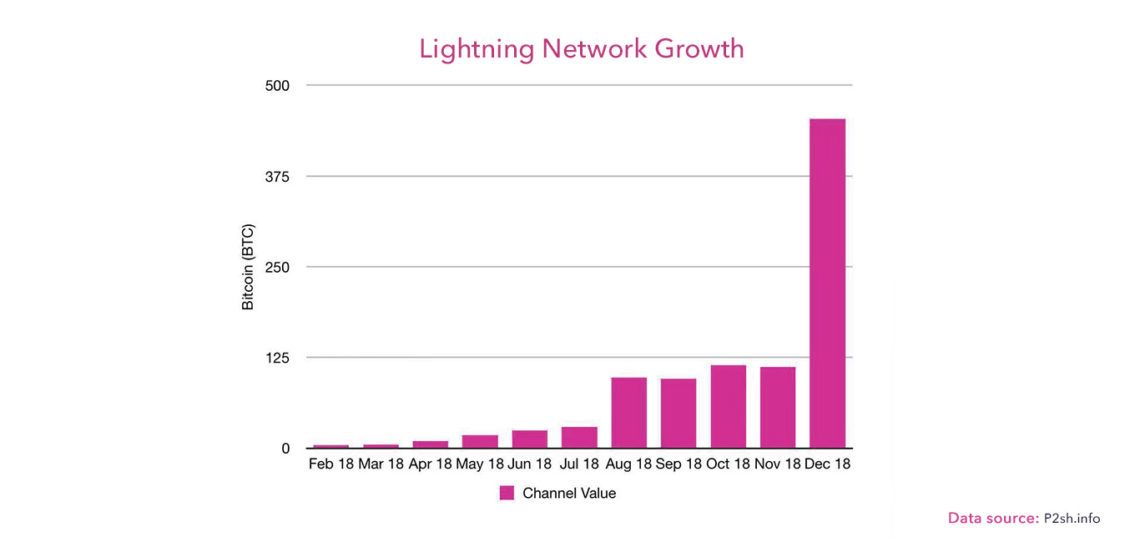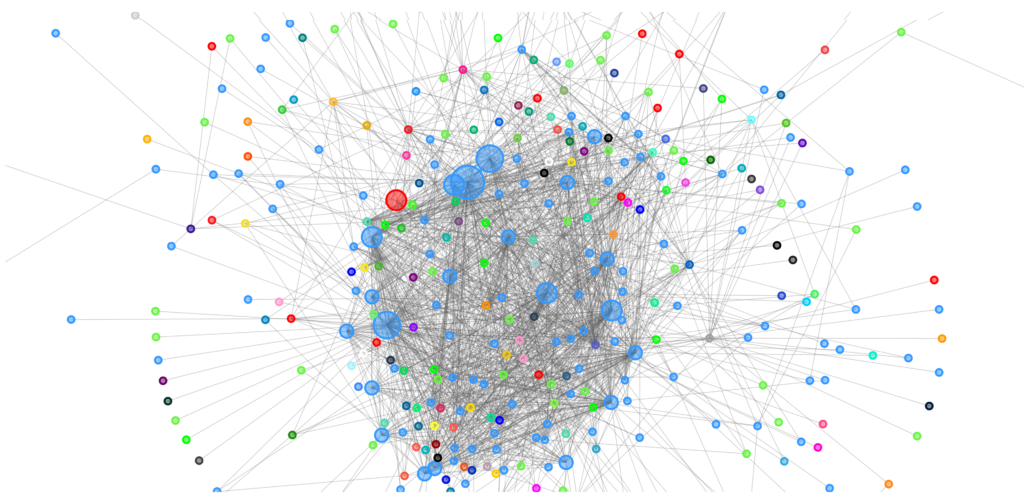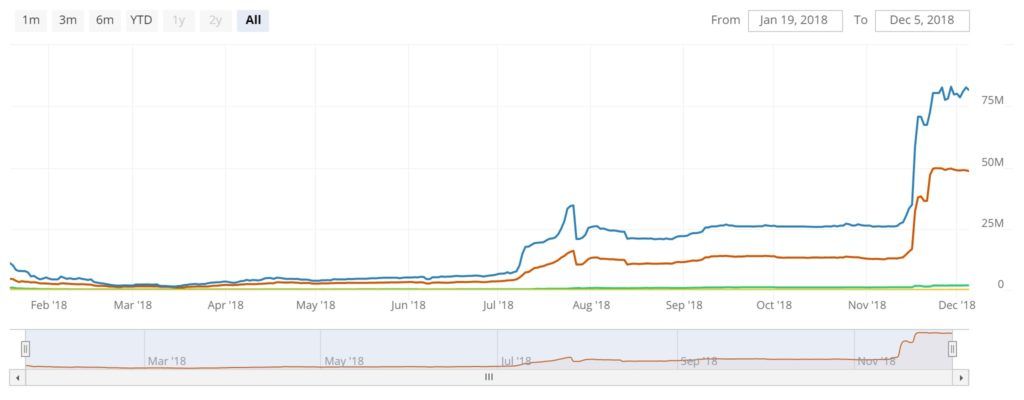The Lightning Network on top of the Bitcoin blockchain has significantly grown since launch in February.
The Bitcoin mainnet now has over 12,000 lightning channels, 1,800 nodes, and a total capacity of 450 bitcoins. What this means is that node and channel operators have committed in total 450 bitcoins to the Lightning Network. This is a more than 100x increase in capacity over that in February.

What is the Lightning Network?
Lightning Network is a separate layer on top of a blockchain that acts as a payment protocol. While the lightning network has often been associated with Bitcoin, it can be implemented on top of other blockchains – for example, the Litecoin blockchain also has a Lightning layer. The Lightning Network’s purpose is to enable quick transactions between participating nodes and is considered a solution to Bitcoin’s scalability issue. The whole network is a peer-to-peer system comprised of a multitude of bidirectional payment channels. For example, if you open a channel with your store around the corner, you can now send between yourselves bitcoins without over-loading the Bitcoin network. The final settlement then occurs on the Bitcoin blockchain, which acts as an arbiter for participants of the Lightning Network. The beauty of the Lightning Network is that it enables micropayments for day-to-day purchases. On top of that, transactions are not traceable by external parties, since these occur in direct payment channels. Furthermore, the nature of the Lightning Network allows for developing tools for atomic swaps of different digital currencies between users. The ugly of the Lightning Network is that if at any time a party drops a channel, their counterparty also loses the connection and will have to settle transactions directly on the blockchain. Also, there have been concerns from some members of the crypto community that Lightning wasn’t entirely decentralized, but looks like a hub-and-spoke system.Looking now at the network, there still are some concentration points, but it looks much more distributed.Lightning Network ⚡️ is totally not turning into a hub-n-spoke topology just like we were told would not happen, right guys? /s pic.twitter.com/PV5lPXWqQF
— David Shares (@DavidShares) July 30, 2018

Why is this important?
Upon further inspection, we can see that the capacity of the Lightning Network has jumped to 450 BTC at the end of November. The increase can be attributed to an increase in capacity per channel and an increase in channels from around 9,000 to over 12,000. This means more people are joining the network. Why and how?
Image courtesy of Twitter, Graph Indexplorer, Bitcoinvisuals.
Disclaimer
In adherence to the Trust Project guidelines, BeInCrypto is committed to unbiased, transparent reporting. This news article aims to provide accurate, timely information. However, readers are advised to verify facts independently and consult with a professional before making any decisions based on this content. Please note that our Terms and Conditions, Privacy Policy, and Disclaimers have been updated.

Christian Gundiuc
After finishing his studies in International Business Administration at the Frankfurt School of Finance & Management, Christian started working at a real estate development company. Upon discovering Bitcoin and the cryptocurrency space, he switched his focus to learn, analyze and write about all things digital.
After finishing his studies in International Business Administration at the Frankfurt School of Finance & Management, Christian started working at a real estate development company. Upon discovering Bitcoin and the cryptocurrency space, he switched his focus to learn, analyze and write about all things digital.
READ FULL BIO
Sponsored
Sponsored

